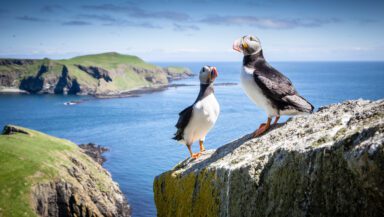Update April 2022: Yesterday the Government announced that bottom trawling will be banned from four of the UK’s offshore Marine Protected Areas (MPAs), including the Dogger Bank!
What is Dogger Bank?
Located about 100 km off the east coast of England, Dogger Bank is a large shallow area in the North Sea. It was once part of a landmass known as Doggerland, connecting Europe and the British Isles during the last ice age. Scientists think stone age humans would have once hunted wooly mammoths in this area.

The basking shark is the second largest fish in the world, reaching 6-8 metres in length, with a mouth that can be over a metre wide. Despite its fearsome appearance, the basking shark only eats the tiniest ocean creatures. Swimming with its mouth open, it uses special ‘gillrakers’ to strain microscopic zooplankton from the seawater. © Greg Skomal / NOAA Fisheries Service
Today, the long-submerged Dogger Bank is home to some very different residents. Unusually, Dogger Bank’s waters are rich in tiny floating plants called phytoplankton all year round, providing a perfect feeding ground for a variety of birds and sea creatures.









